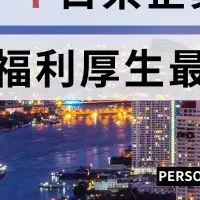
The Transformation of Xiamen: A Model for China's Economic Development Under Xi Jinping's Vision
The Transformation of Xiamen
In the heart of China’s Fujian Province lies the Compressive Service Center in the Xiamen Area of the Pilot Free Trade Zone (FTZ), a beacon of innovative economic policy and collaborative governance. This remarkable facility, characterized by its glass walls and organized workspace, showcases how diverse government agencies work harmoniously to create a seamless experience for businesses. This one-stop center's design resembles that of a high-end banking establishment, but its role transcends traditional expectations, serving as a model for China's modern economic strategies.
A Legacy of Progress
The Compressive Service Center houses an exhibition hall that tells the gripping story of Xiamen's evolution from a modest port city to a global harbor. The hall features important documents dating back to significant milestones, such as the establishment of China's first wholly foreign-owned company in 1982 and the license for the first Chinese-foreign joint venture bank in 1985. At its center stands the Xiamen Economic and Social Development Strategy document from 1985 to 2000, a prized artifact that outlines the city’s path to prosperity, underscoring the foresight of its pioneers, including Xi Jinping, who played a pivotal role in its formation nearly four decades ago.
In October 2024, during an inspection of the Xiamen FTZ, President Xi reflected on this legacy, remarking, "We planted seeds here; today's harvest surpasses our expectations." His words highlight not just the success of a city but the fulfillment of a national vision, affirming that long-term strategic planning, as outlined in the Development Strategy, is crucial for sustained growth and development.
Long-Term Vision as a Driving Force
Xiamen has been a critical trading hub for centuries due to its strategic location along China's southeastern coastline. Designated as one of four Special Economic Zones in 1980, Xiamen became a pilot site for various economic policies aimed at engaging with global commerce. However, when Xi Jinping became the vice mayor in 1985, the city's future was uncertain; economic fundamentals were weak, and differing opinions divided local officials on the city's prospects.
Recognizing the need for a coherent long-term plan, Xi advocated for comprehensive strategies with a vision extending beyond the immediate future. This led to the formulation of a pioneering 15-year development plan that stands as a testament to long-term, strategic economic planning — a rarity in urban governance at the time. Known as the
Topics Business Technology)










【About Using Articles】
You can freely use the title and article content by linking to the page where the article is posted.
※ Images cannot be used.
【About Links】
Links are free to use.